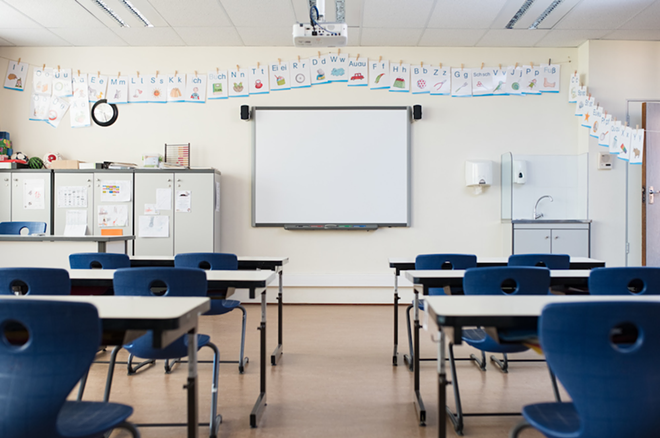Two months ago, students across Florida packed up their bookbags and left school on a Friday afternoon, not knowing they wouldn’t be returning on Monday.
Commissioner of Education Richard Corcoran announced school closures on that Friday evening in mid-March, after state education officials, earlier that day, discouraged school districts from closing and instead offered instruction to sanitize classrooms.
In the following weeks, teachers scrambled to learn how to teach virtually, some with online programs they had never seen before.
When students do return in the fall, at a date still uncertain, only one thing is for sure—the experience will be vastly different than it was before the coronavirus pandemic upended life as we know it.
The new experience for students could include one-way hallways, staggered start times, and a hybrid model of in-person and online learning. Buses could run half empty to accommodate social distancing requirements and each student could be required a physical examination each day before entering schools.
But with education already notoriously underfunded by the state legislature, and bracing for even more cuts, how will school districts afford to enact these new measures?
“Our ultimate goal is we want to get students back in classrooms in August if we can,” Steve Cona, Hillsborough County School Board Vice Chair, told Creative Loafing Tampa Bay. “The best way for our kids to learn is to ensure that they're in the classroom with teachers. As close as we can get to that, that’s what we’re going to strive for.”
A Hillsborough County Public Schools spokeswoman told CL the district has not yet finalized its fall reopening plans, and they will reflect guidelines from the CDC and the Department of Health at that time.
At a press conference last week, Hillsborough County schools Superintendent Addison Davis said the district is prepared for a “blended model,” in which students would learn from home virtually one week, then return to the classroom the next week. Groups of students would alternate weeks, ensuring fewer students congregating on campus at a time.
“All the options are on the table and the good news is, through our endeavors into e-learning, we have a lot of possibilities,” Cona said. “We're going to use whatever plans that make the most sense and can provide the best learning environment.”
Pinellas County Schools also have not finalized plans for reopening in the fall, but district leaders are in talks about a hybrid model and staggered start times.
Billy Townsend, a Polk County School Board member, told CL that school openings ought to begin with voluntary attendance for students and employees.
“It’s unfair to choose between your job and your life,” Townsend said. “I think a hybrid is where we’re going to end up—a voluntary use of schools in careful settings.”
Pinellas County School Board member Bill Dudley told CL he hopes students will be able to return to school in the fall as usual, and not participate in the hybrid system many officials have suggested.
“There’s something about that personal interpersonal relationship that teachers have with their students,” Dudley said. “The learning curve will suffer.”
This might ring true, and schools will have to find ways to mitigate the possible learning loss that occurred during the last months of the spring semester with online learning.
In a new report, the NWEA, the organization behind the widely-used Measures of Academic Progress (MAP testing), reported that students may return to school in the fall with less than 50% of typical learning gains in math.
Davis touched on this topic during his press conference, saying that virtual learning is not the best way for students to learn, and that some students will suffer during the e-learning process.
In the midst of the coronavirus pandemic causing students to move to online education, the technology divide has further separated students who have access to technology and those who don’t. Across the United States, about 15% of households with school-aged children live without high-speed Internet access, according to a Pew Research Center analysis of 2015 Census Bureau data.
The Florida School Boards Association’s recommendations for re-opening Florida’s public schools for the 2020-2021 school year includes physical classroom and distance options, which would allow “parents to make continued decisions that are best for their family…”
The FSBA also recommends continuing the suspension of state required assessments for the 2020-2021 school year.
“The one thing nobody has missed is the big standardized tests,” Townsend said. “I think this is its death, and a well deserved death. It’s entirely political and we should start over in terms of how we evaluate kids.”
“What I think COVID-19 model is going to force us to do is rethink that achievement is what it means to learn.”
Support local journalism in these crazy days. Our small but mighty team is working tirelessly to bring you up to the minute news on how Coronavirus is affecting Tampa and surrounding areas. Please consider making a one time or monthly donation to help support our staff. Every little bit helps.
Follow @cl_tampabay on Twitter to get the most up-to-date news + views. Subscribe to our newsletter, too.


